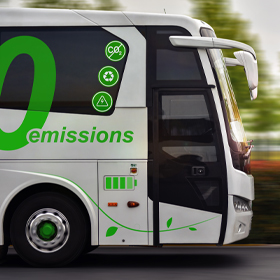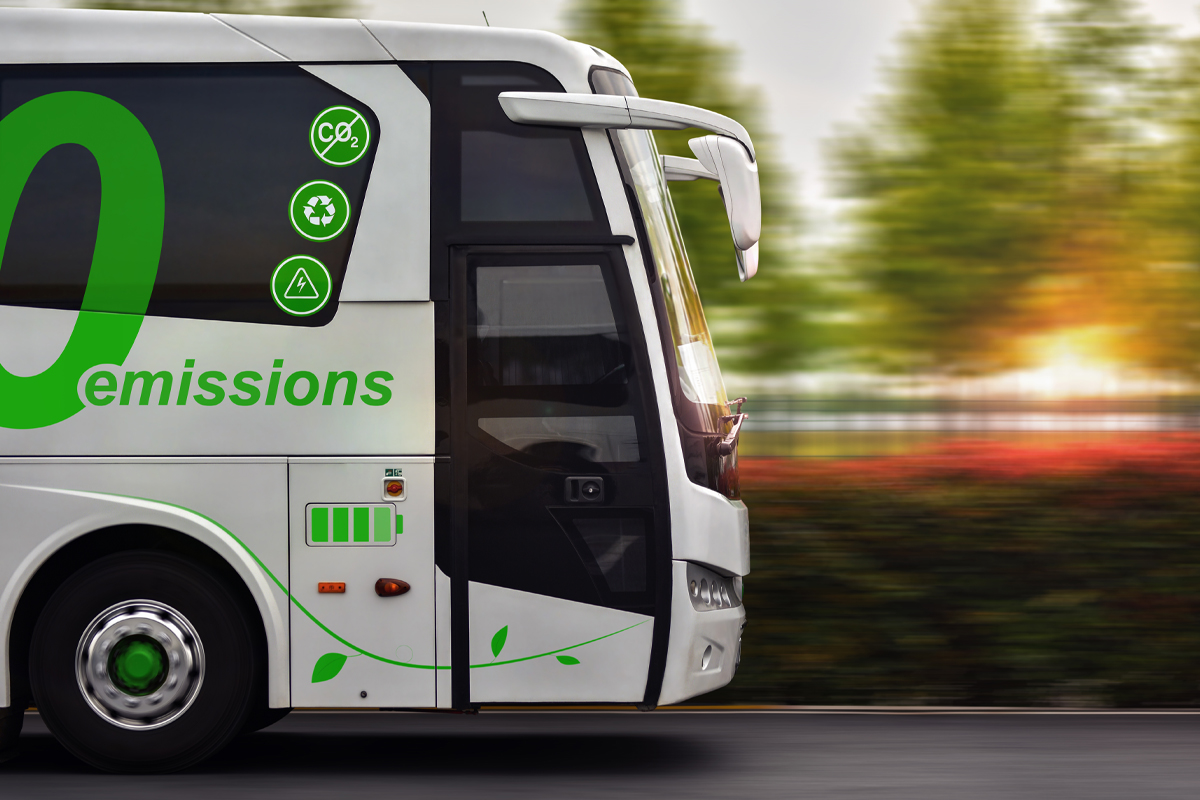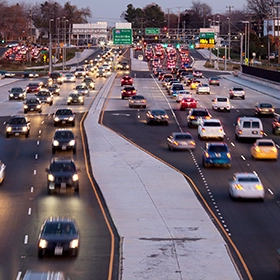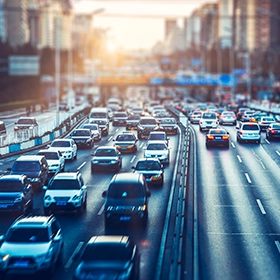Home » News & Resources » Public Transit » Zero-emission Transit Helps the Environment

Zero-emission Transit Helps the Environment
Having a zero-emission fleet is the ideal goal of public transit companies. It refers to using electricity instead of emitting exhaust gas. This can help improve air quality and reduce noise pollution. Many transit companies are working towards, or have switched to zero-emission vehicles.
Zero-emission Transit Helps the Environment
Published: 05/05/2022

Having a zero-emission fleet is the ideal goal of public transit companies. It refers to using electricity instead of emitting exhaust gas. This can help improve air quality and reduce noise pollution. Many transit companies are working towards, or have switched to zero-emission vehicles. With the infrastructure bill on public transit, we may see more companies upgrading their vehicles to reduce the impact on pollution.
As you may know, more than 80% of greenhouse gas emissions are generated from the transportation sector; and this percentage can increase in heavily transited cities. The more traffic, the more it impacts negatively the environment.
The use of public transit can help mitigate this environmental issue; saving a lot of carbon energy and reducing traffic. According to Kansas City Area Transportation Authority (KCATA), a single person who switches from a 20 mile commute in their personal vehicle to public transportation can reduce their CO2 emissions by 20 pounds per day instead of 48,000 pounds. This is in a year!
However, transportation that uses diesel fuel are still contributing to the increase of carbon footprint, and therefore, to pollution. In the past years, public transit started transitioning to more environmentally friendly options such as electric and hydrogen fuel.
Zero-emission Transit in the Capital Area
DASH, which is a transit company located in the Washington D.C. area, offers service aboard zero-emission transport vehicles, as part of the City of Alexandria's Eco-City initiative. WMATA Metro is transitioning to a 100% zero-emission bus fleet by 2045 And other transit companies are following suit.
Not only ground vehicles are switching to zero-emission technology; also some marine and air transport as well. Companies have realized how much responsibility they have in how their transport has contributed to pollution; and are trying to make things better for the planet, and for those who live in it.
Categories
Public TransitTransit Ridership
Mask Mandate
Commuters/Commuting
Transit Display/Digital Signage
Accessibility Commuter Rail
Recent Posts

Washington DC Traffic Ranked Second Worst in the US
Traffic can be a daily nuisance. It’s a daily challenge that people commuting need to go through morning and afternoon. It causes stress, hinders the environment and even costs more than using public transportation.

Congestion Pricing as a Solution for Traffic
Congestion pricing is a way to increase prices without increasing supply. Â This concept is not only used in the transportation industry. Utilities such as electricity varies their prices depending on demand; such as time of day or season of the year.